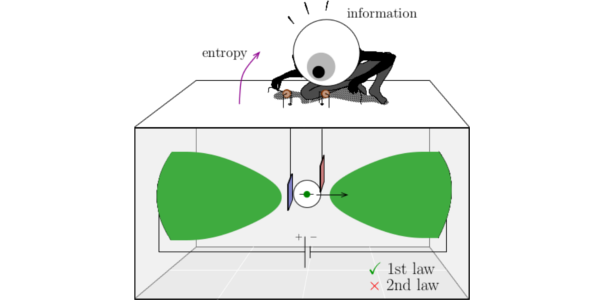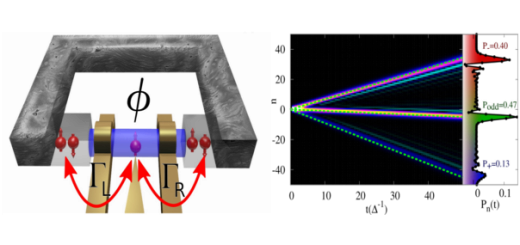Non-equilibrium Autonomous Maxwell (or not) Demons
Article: published in Physical Review Letters by Rafael Sánchez, IFIMAC researcher and member of the Theoretical Condensed Matter Physics Department.
The second law of thermodynamics dictates that a heat engine can generate power provided that it absorbs heat from its environment. Soon after its formulation, Maxwell protested against this claim by arguing that a microscopic “demon” could produce the same effect by selectively controlling the system based on the detailed knowledge of its state. The system hence produces work without changing neither its energy nor the number of its particles.
In a paper published in Physical Review Letters we show that a non-equilibrium distribution generates a paradoxical effect similar to a “Maxwell demon”: it raises the apparent paradox of reducing another system’s entropy at no cost, thereby suggesting that perpetual motion is possible. We call this a “N-demon” (with the “N” for non-equilibrium). Bennett showed that the paradox of the Maxwell demon was resolved by treating information as a thermodynamic resource like heat or work. Similarly, we resolve the paradox of the N-demon by treating “non-equilibrium” as a thermodynamic resource, which is used up as it reduces another system’s entropy. This forbids the building of a perpetual motion machine, but does allow us to propose devices that use such resources (in particular non-equilibrium distributions of electrons or photons) to generate more useful energy than is conventionally believed possible. Non-equilibrium distributions of states are all around us, and are often generated as an unwanted by-product of some physical process, so it is very appealing to think that we might be able to take such a distribution as a resource, and recycle it into useful energy.
In another work, published in Physical Review Research, we consider an autonomous implementation of Maxwell’s demon based on quantum dots. Via capacitive couplings, two quantum dots are able to measure and perform feedback on the system conductor where electric power is generated. This setup allows for comparing different descriptions based on information flows to a more conventional thermoelectric approach. It further allows us to investigate the entropic cost of breaking detailed balance as well as fluctuation theorems describing information to work conversion. In particular, we derive a fluctuation relation using a novel kind of time-reversal on the single-particle level for the system alone. [Full article – PRL][Full article – PRR]




















